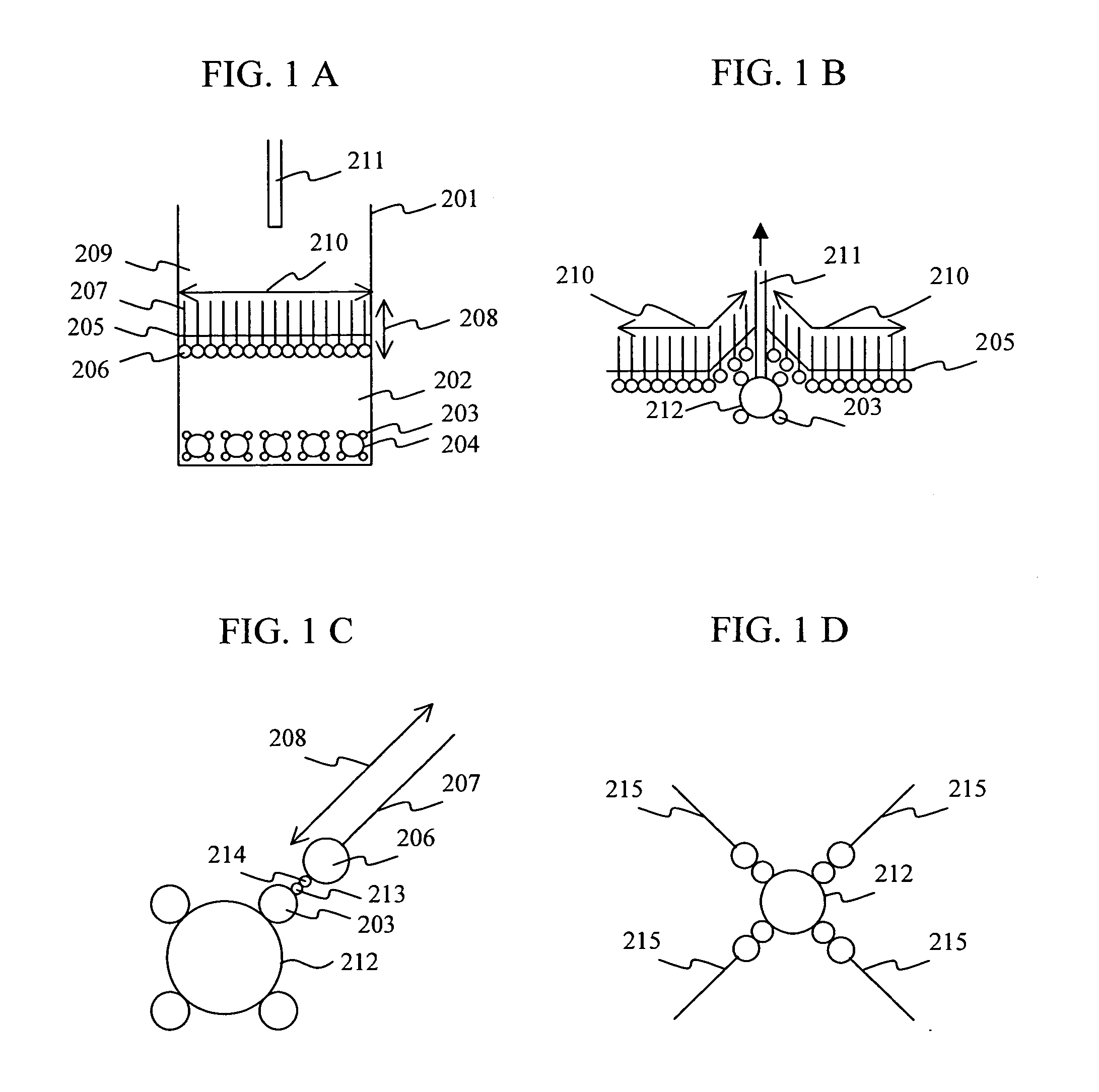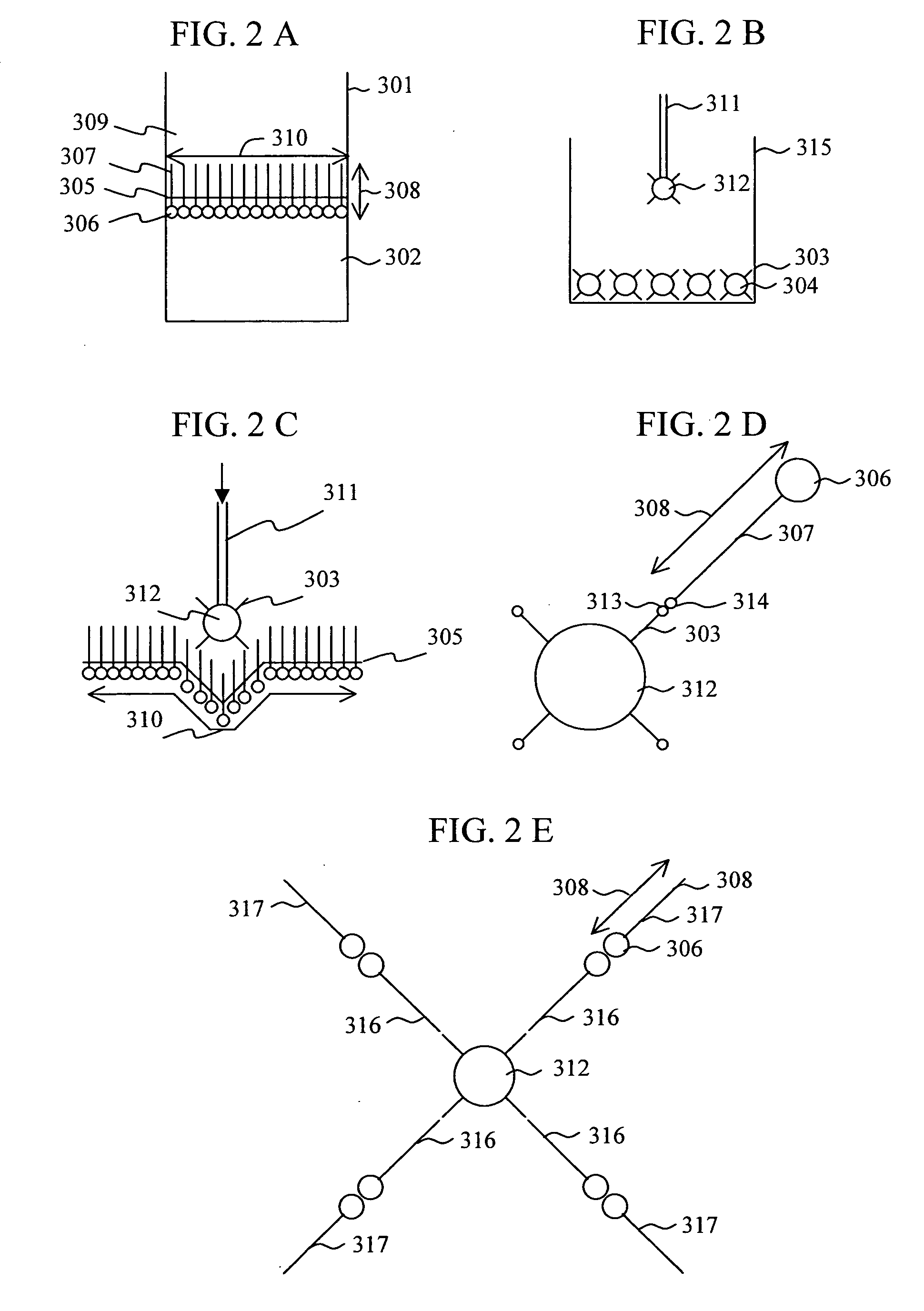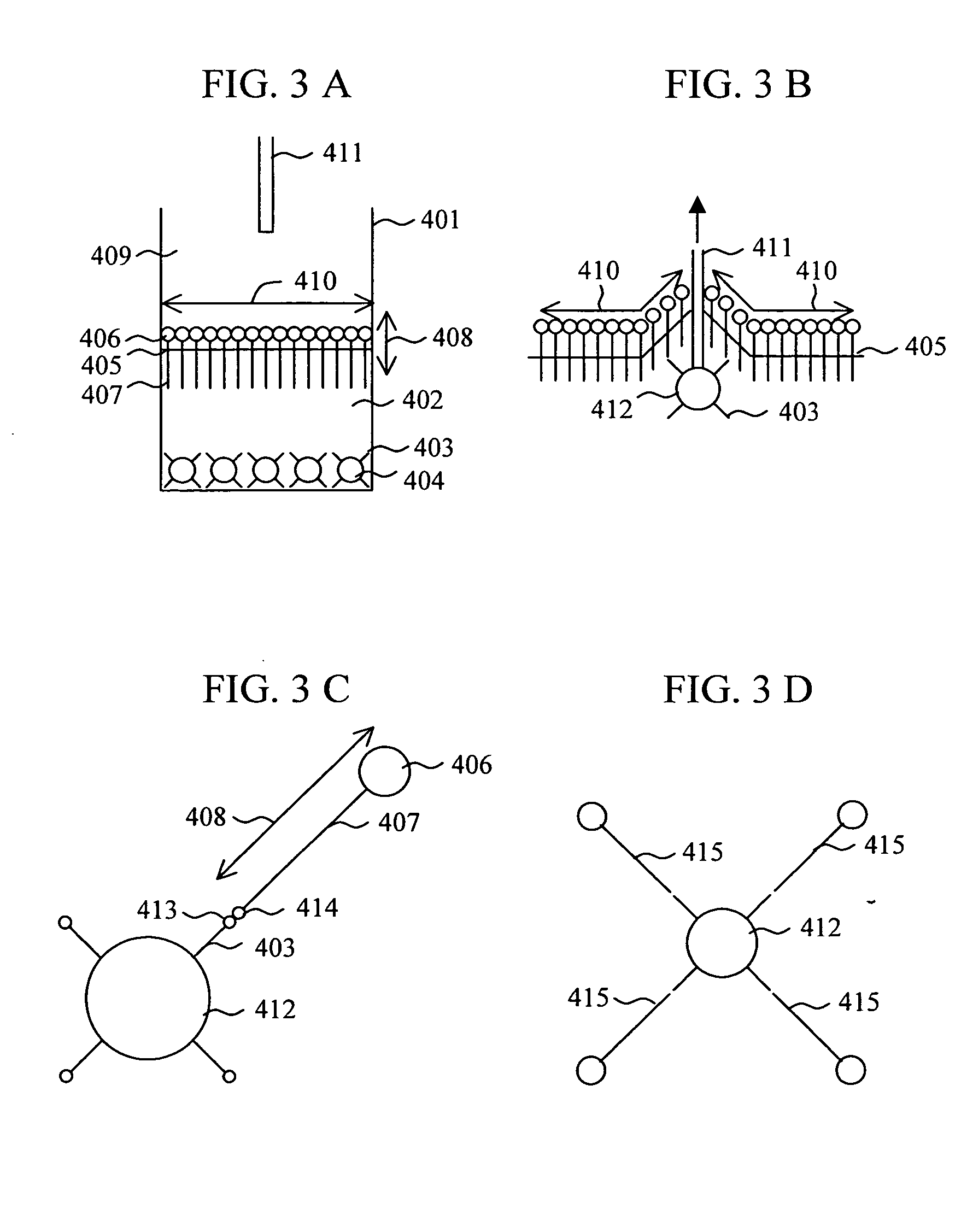Beads with immobilized amphiphilic molecules, method of fabrication thereof, and method of arraying beads for capillary beads-array
a technology of immobilized amphiphilic molecules and beads, which is applied in the field of beads with immobilized amphiphilic molecules, methods of fabrication thereof, and arraying beads for capillary beads arrays, can solve the problems of difficult to apply the conventional method to amphiphilic molecules with extremely low solubility in solvents, difficult to immobilize amphiphilic molecules scarcely soluble in solvents, and difficult to uniformly orient probe molecules on the surface of beads
- Summary
- Abstract
- Description
- Claims
- Application Information
AI Technical Summary
Benefits of technology
Problems solved by technology
Method used
Image
Examples
Embodiment Construction
[0028]FIGS. 1A to 1D are schematic drawings to explain one embodiment of the present invention in which a monomolecular film of amphiphilic molecules prepared at an air / water interface is immobilized on a bead with a hydrophilic surface.
[0029] After preparing water phase 202 by pouring water into a vessel 201, beads 204 having a specific gravity higher than water and hydrophilic portions 203 on the surface are put in the vessel and the beads 204 are allowed to sink in the water phase 202. Then, amphiphilic molecules 208 containing a hydrophilic portion 206 and a hydrophobic portion 207 are dropped onto an air / water interface 205 formed by air 209 and the water phase 202 in the vessel 201. At this time, the amphiphilic molecules 208 orient their hydrophilic portions 206 toward the water phase 202 and their hydrophobic portions 207 toward air 209 to form a thin film spreading over the air / water interface 205. This thin film of the amphiphilic molecules becomes a monomolecular film 21...
PUM
 Login to View More
Login to View More Abstract
Description
Claims
Application Information
 Login to View More
Login to View More - R&D
- Intellectual Property
- Life Sciences
- Materials
- Tech Scout
- Unparalleled Data Quality
- Higher Quality Content
- 60% Fewer Hallucinations
Browse by: Latest US Patents, China's latest patents, Technical Efficacy Thesaurus, Application Domain, Technology Topic, Popular Technical Reports.
© 2025 PatSnap. All rights reserved.Legal|Privacy policy|Modern Slavery Act Transparency Statement|Sitemap|About US| Contact US: help@patsnap.com



